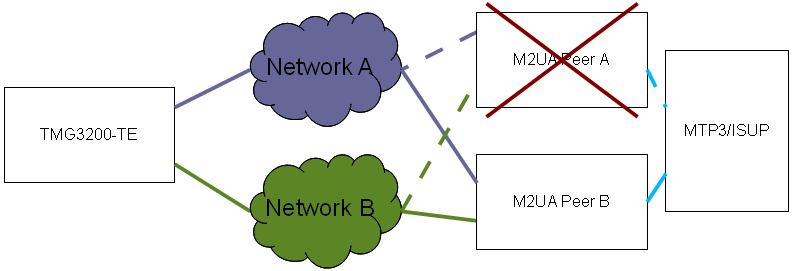Redundancy & High Availability:Software:Signaling Protocols
(add examples for ss7/sigtran for tmg800 and tmg3200) |
m (fix link) |
||
| Line 8: | Line 8: | ||
| − | The following example shows the redundancy of [[MTP2]] links. | + | The following example shows the redundancy of [[MTP2_Layer|MTP2]] links. |
[[Image:Ha_TMG3200_MTP2.png|TMG3200 MTP2 Redundancy Setup]] | [[Image:Ha_TMG3200_MTP2.png|TMG3200 MTP2 Redundancy Setup]] | ||
Revision as of 11:45, 10 February 2011
The most recent signaling protocols have inherent redundancy and high availability features. For the other signaling protocols, there are still way to improve service availability.
Contents |
TMG800 / TMG3200 Series
SS7
TelcoBridges recommends to use 2 timeslots as MTP2 links on different line interface. This will protect against E1/T1 or DS3 failure. Also, the TMG3200-DS3 and TMG3200-STM1 have 2 signaling ports that can be configure as MTP2 links.
The following example shows the redundancy of MTP2 links.
The SS7 network is still available if 1 link goes down.
SIGTRAN
SIGTRAN supports multiple destination addresses and peers to create redundancy.
The following example shows how M2UA can take advantage of the Tmedia dual VoIP interfaces to create a redundant system (Note: M2PA and M3UA have similar features).
The M2UA system is still operational even if there is a network failure.
The M2UA system is still operational even if a M2UA peer goes down.




